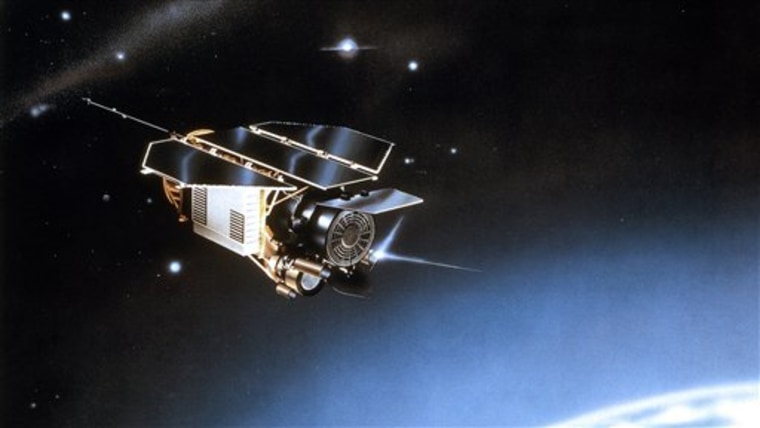A defunct German research satellite crashed into the Earth somewhere in Southeast Asia on Sunday, a U.S. scientist said — but no one is still quite sure where.
Most parts of the minivan-sized ROSAT research satellite were expected to burn up as the spacecraft hit the atmosphere at a speed of 17,000 mph (27,500 kilometers per hour), but up to 30 fragments weighing a total of 1.87 tons (1.7 metric tons) could have crashed to the surface at velocities up to 280 mph (450 kilometers per hour), the German Aerospace Center said.
Jonathan McDowell of the Harvard-Smithsonian Center for Astrophysics in Cambridge, Massachusetts, said the satellite appears to have gone down over Southeast Asia. He said two Chinese cities with millions of inhabitants each, Chongqing and Chengdu, had been in the satellite's projected path during its re-entry time.
"But if it had come down over a populated area there probably would be reports by now," the astrophysicist, who tracks human-made space objects, told The Associated Press in a telephone interview.
Calculations based on U.S. military data indicate that satellite debris must have crashed somewhere east of Sri Lanka over the Indian Ocean, or over the Andaman Sea off the coast of Myanmar, or further inland in Myanmar or as far inland as China, he said.
The satellite entered the atmosphere between 9:45 p.m. and 10:15 p.m. ET Saturday, and would have taken 15 minutes or less to hit the ground, the German Aerospace Center said. Hours before the re-entry, the center said the satellite was not expected to land in Europe, Africa or Australia.
There were no immediate reports from Asian governments or space agencies about the fallen satellite.
The satellite used to circle the planet in about 90 minutes, and it may have traveled several thousand kilometers (miles) during its re-entry, rendering exact predictions of where it crashed difficult.
German space agency spokesman Andreas Schuetz said a falling satellite also can change its flight pattern or even its direction once it sinks to within 90 miles (150 kilometers) above the Earth.
Schuetz said the agency was waiting for data from scientific partners around the globe. He noted that it took the U.S. space agency NASA several days to establish where one of its satellites had hit last month.
The 2.6-ton scientific ROSAT satellite was launched from Cape Canaveral in Florida in 1990 and was retired in 1999 after being used for research on black holes and neutron stars and performing the first all-sky survey of X-ray sources with an imaging telescope.
Experts say the largest single fragment that could have survived re-entry is the telescope's heat-resistant mirror.
"The impact would be similar to, say, an airliner having dropped an engine," said McDowell. "It would damage whatever it fell on, but it wouldn't have widespread consequences."
A dead NASA satellite fell into the southern Pacific Ocean last month, causing no damage but spreading debris over a 500-mile (800-kilometer) area.
Since 1991, space agencies have adopted new procedures to lessen space junk and having satellites falling back to Earth. NASA says it has no more large satellites that will fall back to Earth uncontrolled in the next 25 years.
